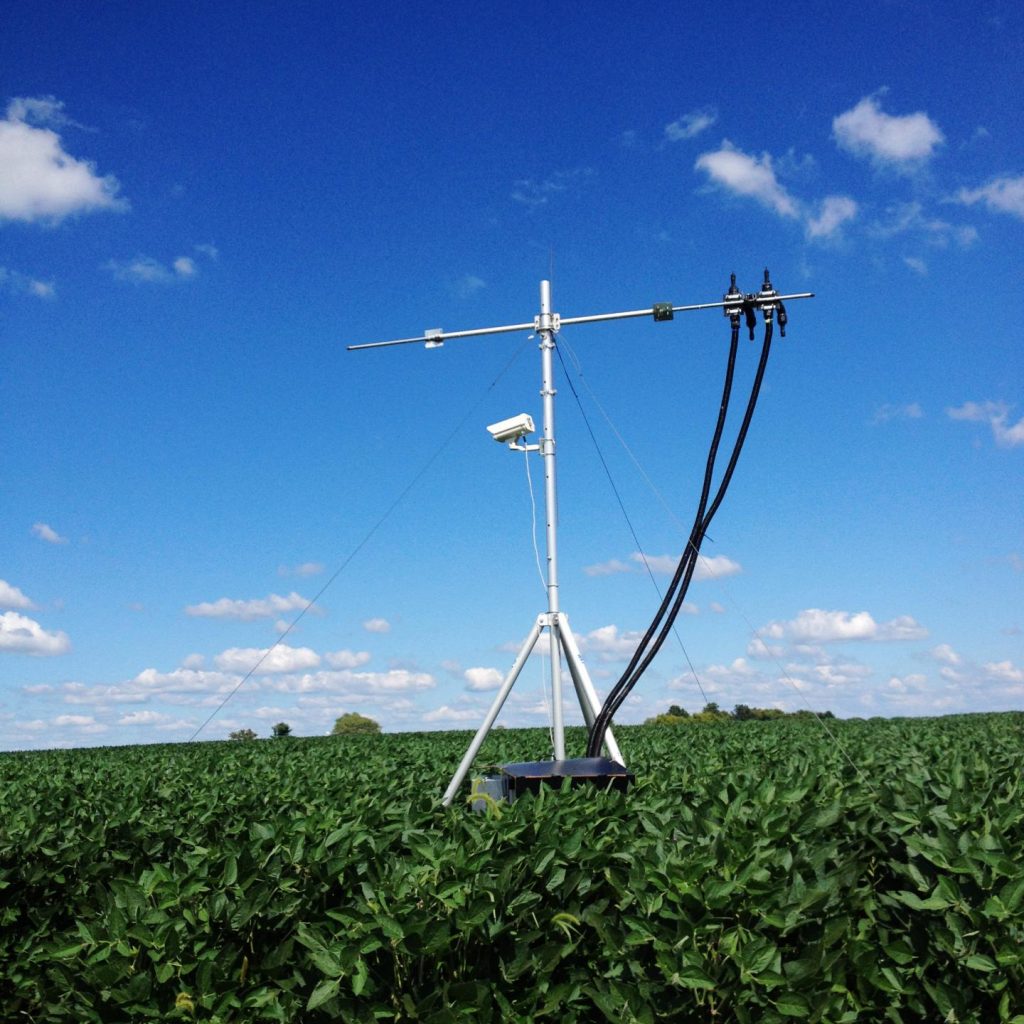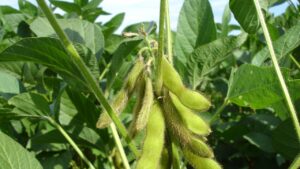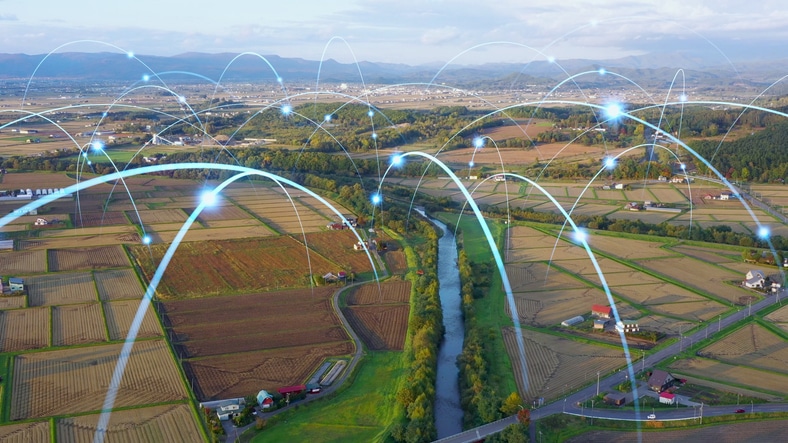Twelve-foot metal poles with long outstretched arms dot a Midwestern soybean field to monitor an invisible array of light emitted by crops. This light can reveal the plants’ photosynthetic performance throughout the growing season, according to newly published research by the University of Illinois.
“Photosynthetic performance is a key trait to monitor as it directly translates to yield potential,” says Kaiyu Guan, an assistant professor in the College of Agriculture, Consumer, and Environmental Sciences (ACES) and the principal investigator of this research. “This method enables us to rapidly and nondestructively monitor how well plants perform in various conditions like never before.”
Published in the Journal of Geophysical Research – Biogeosciences, the Illinois team led by Guofang Miao, a postdoctoral researcher in ACES and the lead author of the paper, report the first continuous field season to use sun-induced fluorescence (SIF) data to determine how soybeans respond to fluctuating light levels and environmental stresses.
“Since the recent discovery of using satellite SIF signals to measure photosynthesis, scientists have been exploring the potential to apply SIF technology to better agricultural ecosystems,” says study collaborator Carl Bernacchi, an associate professor of plant science at the Carl R. Woese Institute for Genomic Biology (IGB). “This research advances our understanding of crop physiology and SIF at a local scale, which will pave the way for satellite observations to monitor plant health and yields over vast areas of cropland.”
Photosynthesis is the process where plants convert light energy into sugars and other carbohydrates that eventually become our food or biofuel. However, one to two percent of the plant’s absorbed light energy is emitted as fluorescent light that is proportional to the rate of photosynthesis.
Researchers capture this process using hyperspectral sensors to detect fluctuations in photosynthesis over the growing season. They designed this continuous study to better understand the relationship between absorbed light, emitted fluorescent light, and the rate of photosynthesis. “We want to find out whether this proportional relationship is consistent across various ecosystems, especially between crops and wild ecosystems such as forests and savannas,” says Miao.
“We are also testing the applicability of this technology for crop phenotyping to link key traits with their underlying genes,” says co-author Katherine Meacham, a postdoctoral researcher at the IGB.
“SIF technology can help us transform phenotyping from a manual endeavor requiring large teams of researchers and expensive equipment to an efficient, automated process,” says co-author Caitlin Moore, also a postdoctoral researcher at the IGB.
A network of SIF sensors has been deployed across the U.S. to evaluate croplands and other natural ecosystems. Guan’s lab has launched two other long-term SIF systems in Nebraska to compare rainfed and irrigated fields in corn-soybean rotations. “By applying this technology to different regions, we can ensure the efficacy of this tool in countless growing conditions for a myriad of plants,” says Xi Yang, an assistant professor at the University of Virginia, who designed this study’s SIF monitoring system.
“Our ability to link SIF data at the leaf, canopy and regional scales will facilitate the improvement of models that forecast crop yields,” Guan says. “Our ultimate goal is to monitor the photosynthetic efficiency of any field across the world to evaluate crop conditions and forecast crop yields on a global scale in real time.”












